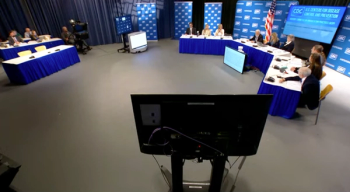
Exploring MIPS 2020: Keys for physicians to know
As physician practices work to understand what’s changed, there are certain aspects of which they need to be aware. The following sections provide key takeaways and offer strategies for meeting the coming year’s requirements.
In August, the Centers for Medicare & Medicaid Services (CMS) announced proposed modifications to the Merit-Based Incentive Payment System (MIPS). As physician practices work to understand what’s changed, there are certain aspects of which they need to be aware. The following sections provide key takeaways and offer strategies for meeting the coming year’s requirements.
Threshold increases are surmountable
CMS has adjusted both the minimum and additional performance thresholds, as well as the positive and negative payment adjustments. Even with these changes, it is still reasonable to expect that most practices will avoid penalties, especially when you consider how well organizations have done in the program to date. In 2019, the mean final score is expected to be 74 points, which is well above the minimum threshold of 45. Note that as more organizations clear this benchmark, the amount of available bonus payments will continue to remain low.
Promoting interoperability warrants attention
2019 brought significant changes to the promoting interoperability category. Practices lost their ability to use straightforward measures that have traditionally bolstered scores, such as sharing patient education and demonstrating secure communication. CMS also removed a few of the bonus measures, including reporting on an improvement activity related to an organization’s certified electronic health record technology (CERT). Now, the remaining measures have taken on more weight, which requires some changes in how practices approach this category.
Going forward, organizations should concentrate on electronic exchange of patient information. This is not only a priority for the MIPS program but for other regulatory agencies as well-a high degree of data interoperability is where the future of healthcare is headed. To make progress in electronic information exchange, practices-particularly smaller ones-should be actively partnering to send and receive care summaries via direct messaging. Organizations may want to reach out to their top referral sources to begin work in this area. All practices will need to report their performance in 2020, since the blanket exception to receiving and incorporating electronic health information will no longer be permitted.
Target improvement activities
CMS has made changes to the improvement activities category. In the 2020 MIPS performance year CMS has proposed the addition of two activities and removal of 15. Practices should ensure that the activities to which they plan to attest are still available. Also, the level of required participation has changed. It used to be if one provider was engaged in an activity, a group could attest to it. Starting in 2020, at least 50% of the providers in a group must be engaged in that activity. Although practices may already be following this requirement, it is of note for organizations that have historically had less than half of their providers participating in improvement work.
To optimize performance in this category, organizations should consider pursuing a strategic approach, delving deep into certain areas versus employing a more scattershot method. One valuable tactic is creating a quality improvement team. From a practical standpoint, a practice can meet at least four of the improvement requirements just by having this type of team and working to improve one quality measure with an Improvement Activity counterpart, such as Closing the Referral Loop. Moreover, this is also a smart business decision, because this kind of team allows a practice-even a small one-to focus its improvement efforts and align them with its overall strategic goals. Another suggestion is to group activities around patient satisfaction surveys. Many practices are already conducting these surveys, and clustering work lets them zero in on one area while meeting multiple improvement requirements.
Continue to focus on quality reporting
Although quality reporting has been a top priority for a while, organizations can still improve in this area. It is wise to check quality reports early in the year: the last 90 days of the reporting period is not the time to find out there’s an issue. Running these reports throughout the year lets practices stay abreast of performance and avoid last minute crises in the fall.
When selecting measures to report, be sure they have not topped out. This happens to measures in which everyone is performing well: CMS will remove them across a four-year period, decreasing the amount of points an organization can receive each year until the measure is gone. So, if an organization is reporting on six measures and two of them are topped out, it will be harder to meet performance thresholds. To get a sense of whether a practice has the right mix of measures, it is a good idea to use the
Another recommendation pertains to reporting. This year, providers can report their measures through a both their certified electronic health record and a registry and receive credit for the top scoring measures in each. In past years, clinicians and groups could report through both direct EHR reporting and a registry and CMS would fully score each reporting method and assign the higher quality score to the clinician or practice. In 2019 and beyond, CMS will utilize the top 6 scoring quality measures between the two methods to calculate the reporter’s score. This may benefit reporters by allowing them to score higher in the Quality category.
A little planning can lead to better outcomes
January is just around the corner, and 2020 will be here before you know it. By reviewing these new MIPS changes and outlining a strategic approach to meeting requirements, organizations can realize stronger performance. In the long term, this will not only help a practice receive higher bonus payments, but also lay the foundation for effective value-based care.
Courtney Tesvich is Vice President of Compliance for Nextech.
Newsletter
Stay informed and empowered with Medical Economics enewsletter, delivering expert insights, financial strategies, practice management tips and technology trends — tailored for today’s physicians.















